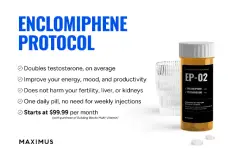I have been on T for almost 10 years and I know about free and total T, but for the first time a new doc tested bio-available T. I always though bio-available was another word for free T. My numbers are:
Total 799
Free 196
Bioavailable 511
All 3 are flagged as high by the lab. So what's the significance with bioavailable?
Total 799
Free 196
Bioavailable 511
All 3 are flagged as high by the lab. So what's the significance with bioavailable?














